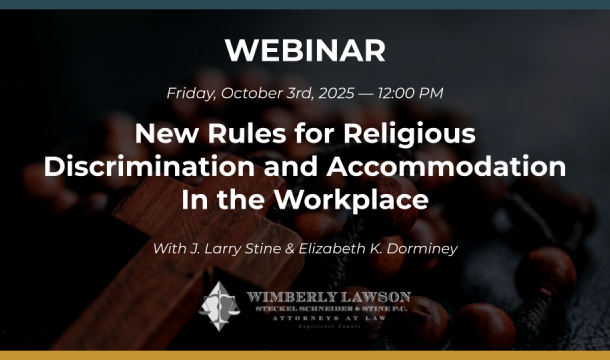THE DOL SALARY THRESHOLD INCREASE AND ITS IMPLICATIONS FOR EMPLOYERS: RAISE PAY OR CUT HOURS?
On May 18, 2016, the U.S. Department of Labor (DOL) published a Final Rule which almost doubles the current salary threshold for the executive, administrative, and professional (EAP) exemptions to overtime. The rule, which takes effect December 1, 2016, is designed to plug a perceived gap that some feel causes many lower-level managers to be unfairly deprived of overtime when they work more than 40 hours.
The new rule will raise the salary threshold indicating eligibility from $455/week to $913/week ($47,476 per year), in 2016. This salary threshold will be updated automatically every three years, based on wage growth over time, to keep pace with inflation.
But will the rule actually result in a raise for 4.2 million people, as DOL predicts? Or will it result in perceived demotions, restrictions on hours, and cuts in take-home pay? We shall see.
When the rule takes effect, employers will have the following options for bringing employees who are currently salaried and exempt, but earning less than $913/week, into compliance:
- Raise the exempt, salaried worker's pay to at least $913/week, and prepare to increase that pay as DOL increases the threshold; or
-
Make the employee hourly, monitor hours worked, and either
- Restrict the employee to working no more than 40 hours/week; or
- pay time-and-a-half for all hours worked over 40.
There is another option, approved by Federal law but not allowed in all States, of treating the employee as salaried nonexempt and paying them a guaranteed salary each week for all hours worked, plus a supplement of ½ times their regular rate for each hour worked over 40. Public-sector employers also have the option to pay overtime in the form of compensatory time off, within certain limits, in lieu of cash wages.
While DOL obviously believes it is helping employees get a raise, the new rule may have unintended consequences. It is much more likely that employers will shift salaried workers currently paid less than the new minimum to hourly status, with hourly rates that approximate their former salaries, and control costs by restricting overtime. Many employees may perceive this as a demotion. There is more to salaried status than simply pay. For example, many employers make only salaried employees eligible for certain benefits like health insurance and retirement.
DOL's changes also will move up that first rung on the ladder of success for many workers – a lot. The old exemption threshold ($455/week) works out to about $9/hour over 50 hours, not an unusual rate for a starting-level assistant manager at a discount retail chain, for example. It's certainly an improvement over a starting minimum hourly wage of $7.25. Learning to be a manager can take time, as the employee learns procedures and develops supervisory skills. When the starting pay for a salaried managerial position moves up to $913/week: that means an effective rate of $18.26 per hour over 50 hours. The employer is making more than twice the investment in the employee. Many small (and even large) employers may be reluctant to give inexperienced first-timers an opportunity to move up from hourly work at an annual salary in excess of $47,000. If they remain at their current rate of $9/hour, and are allowed to work no more than 40 hours each week, they will gross only $360/week. That's a hefty pay cut. If they continue to work 50 hours, with overtime, they will take home $495: just $40 more than they earned as a salaried manager before the change. That's a pretty measly raise.
Every employer with salaried, exempt employees earning below the new $913 weekly threshold needs to consider their options for compliance with the new rules before the December 1, 2016 effective date.
Related Content
Get Email Updates
Recent Content

Department of Homeland Security (DHS) is Terminating Family Reunification Parole (FRP) Processes

DHS is Terminating Temporary Protected Status for Ethiopia

Issues Regarding Employee Access to Their Personnel Files

Issues of Employer Access to Employees’ Personal Devices Such as Cell Phones, Etc

Settlement Agreement Wording Can Determine Tax Treatment



